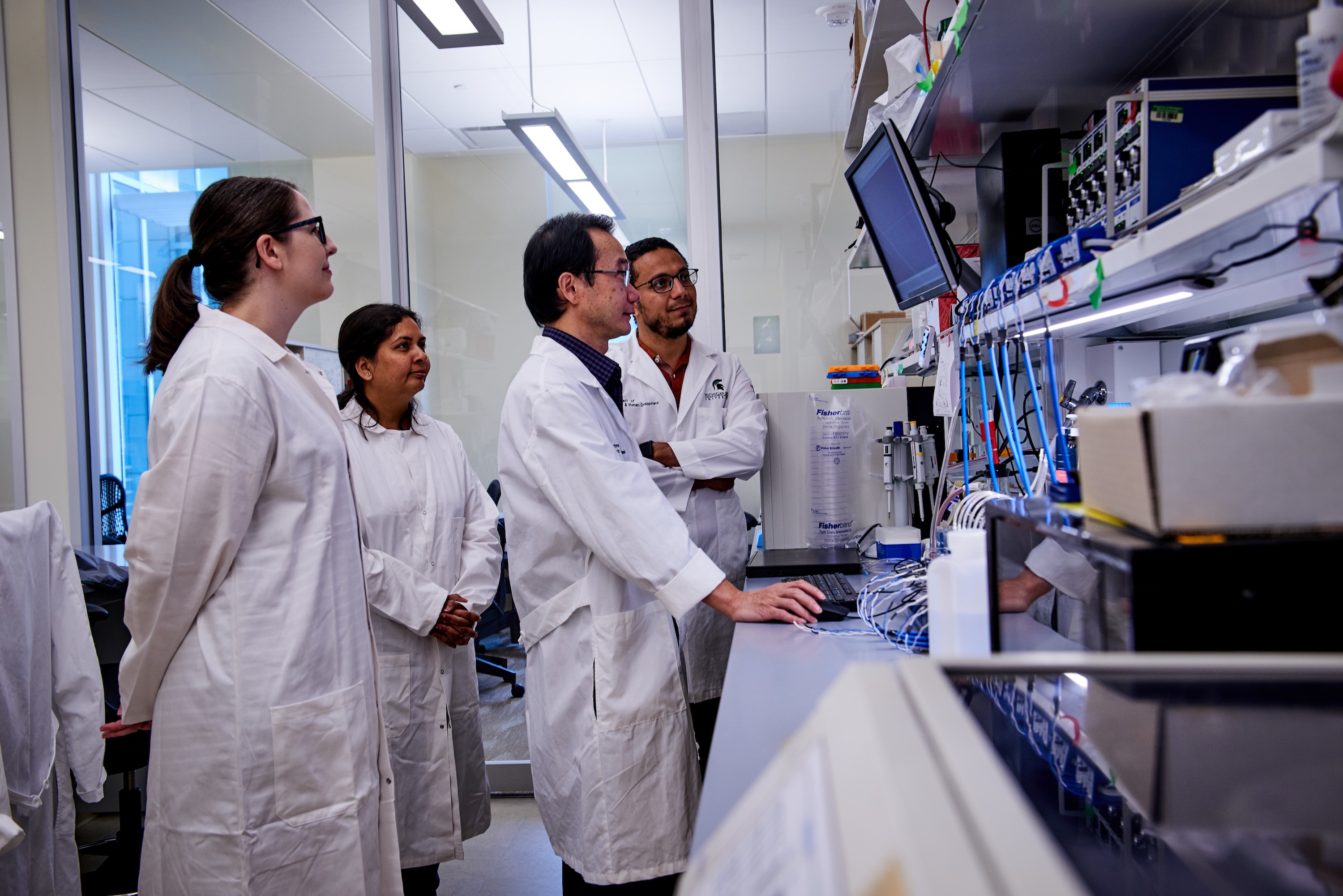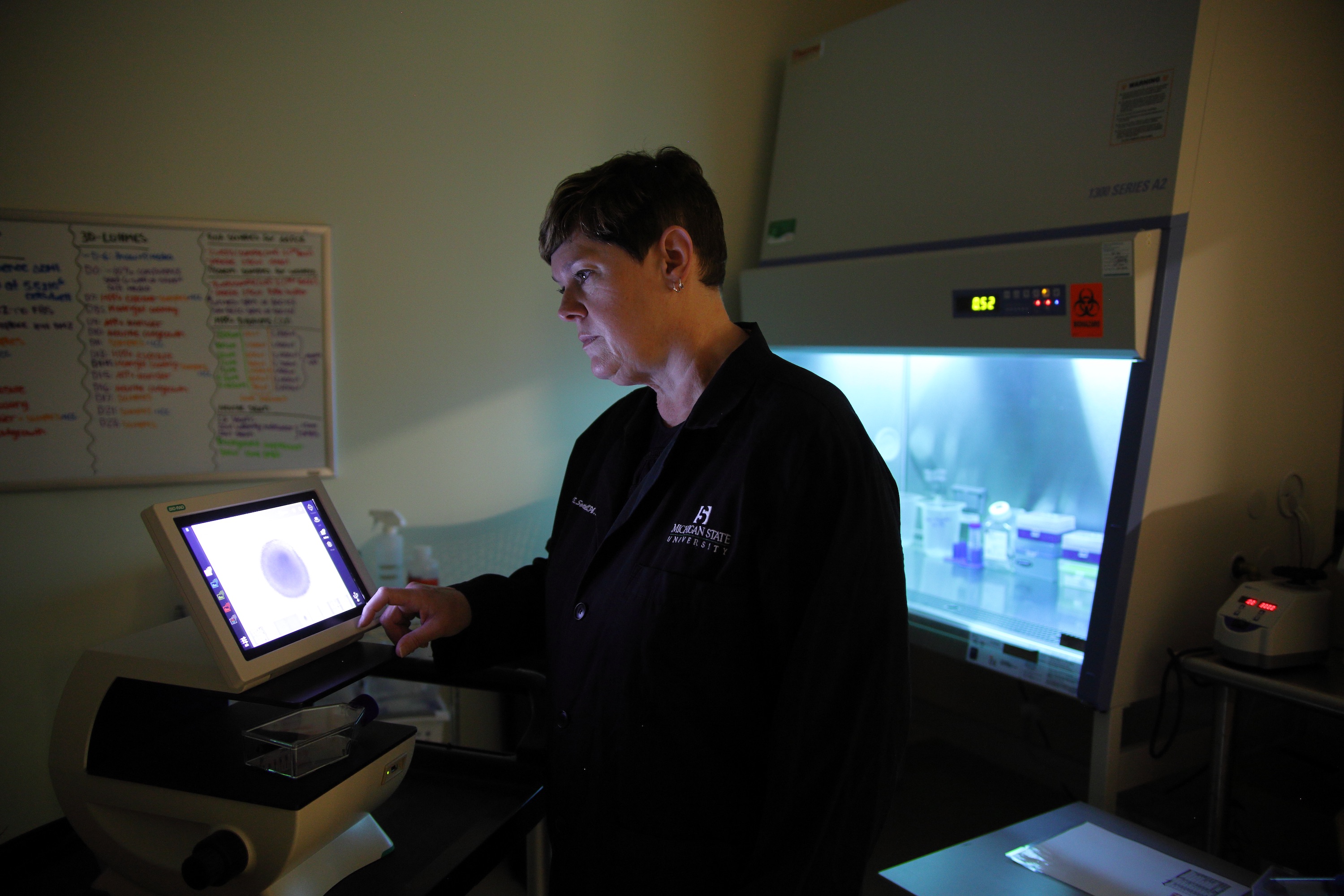People who work in health care believe in continuous improvement. And when there’s an opportunity for health care experts to partner with researchers at academic institutions and related companies, great things can happen.

That was the vision in the early 2000s when Michigan State University and Grand Rapids leaders began discussing the possibilities of bringing a four-year medical school to Grand Rapids.
“Leaders in Grand Rapids were interested in what a medical school could bring to the community,” said Marsha D. Rappley, who was dean of the MSU College of Human Medicine during the time of transition. “And at MSU, we were evaluating what kind of opportunities this could present for the college. An economic study returned some strong evidence about what the benefits would be in Grand Rapids, so we launched our own kind of impact study internally.
“We were looking for a chance to grow and strengthen our values,” Rappley said. “We had 18 working groups looking at very specific areas. I think that for us, it was about creating significant research and clinical opportunities for our students and faculty.”
Based on these insights, the College of Human Medicine made a strategic decision to establish its medical school headquarters and expand its biomedical research portfolio in Grand Rapids. In 2010, MSU opened the privately funded Secchia Center more than 70 miles from the main campus in East Lansing. Since then, time — and many success stories — have proven that this move was advantageous.
Grand Rapids also was thinking big
The initial goals of this West Michigan partnership were to strengthen research capabilities, increase clinical training and research opportunities for students, contribute to the economic and health care growth in Grand Rapids and enhance the national reputation of the school and its partners.
The integration with the Grand Rapids “Medical Mile” has provided opportunities for researchers, students, patients and the community. This atmosphere of discovery is helping strengthen the Grand Rapids economy by creating jobs, attracting investors and solidifying the city’s status as a health care innovation center.
“The presence of MSU College of Human Medicine in Greater Grand Rapids has been a key component in the success and growth of the Medical Mile and the region’s health science sector,” said Randy Thelen, president and CEO of The Right Place, Inc. “MSU is playing a leadership role in advancing education, research and technology transfer opportunities that have provided a catalyst to our region’s economic growth and prosperity.”
Grand Rapids Innovation Park houses a range of scientific talent
In addition to the Secchia Center located nearby, three major facilities are housed in the Grand Rapids Innovation Park — the MSU Grand Rapids Research Center, the Doug Meijer Medical Innovation Building and the Perrigo corporate headquarters building. The close physical proximity improves collaboration.

“The relationship between MSU College of Human Medicine and Corewell Health has become a prime example of how collaboration can result in bench to bedside treatment for our patients,” said Paula Schuiteman-Bishop, vice president of research at Corewell Health. “One of the most notable successes was the Bachmann-Bupp gene discovery. Now we are treating patients from all over the world.”
The Bridge is an incubator space for startup companies in the Doug Meijer Medical Innovation Building. That space, and additional support, is provided by the MSU Research Foundation in association with the College of Human Medicine and the Grand Rapids SmartZone Local Development Finance Authority. The MSU Research Foundation offers a range of entrepreneurial services to help with everything from funding to grant development to support with regulatory compliance.
“We have almost 20 tenants in The Bridge, which is at about 90% capacity,” said Jeff Wesley, executive director of Red Cedar Ventures, the venture investment subsidiary of the MSU Research Foundation. “It’s hard for an organization to do anything alone these days, so you partner with people to get a multiplier effect. That’s what we’ve done in Grand Rapids. We have regional partnerships with several area hospitals, businesses, corporations and other innovative organizations. These collaborations are everything for our ability to achieve success.”
15 years of progress and counting
There now are over 200 MSU research faculty and staff located in Grand Rapids. It is estimated that the medical school contributes more than $300 million a year in economic impact as well as helping draw world-class researchers and leading companies to the area.
Federal lifetime funding for research has grown to $191 million since 2009, and National Institutes of Health lifetime funding has contributed $121 million.
And the end goal is to bring innovation to commercialization.
One example of success in taking a solution from research to the real world is CavGene Therapeutics, Inc. — formed by two scientists, Kathy Steece-Collier, a professor of translational neuroscience in the MSU College of Human Medicine, and Fredric Manfredsson, a former MSU professor who is now at Barrow Neurological Institute — along with support from the MSU Innovation Center. This startup is creating new treatments for neurodegenerative diseases, and its first goal is to develop a gene therapy to improve care for people who have Parkinson’s disease.
Another exciting collaboration story involves the discovery of a rare disease and the development of an effective treatment in less than two years. MSU College of Human Medicine professor André Bachmann and two Corewell Health physicians, Caleb Bupp and Surender Rajasekaran, were named 2023 Inventors of the Year by the New York Intellectual Property Law Association for discovering what is now known as the Bachmann-Bupp syndrome. Experience enabled them to repurpose an existing FDA-approved treatment, which expedited the innovation process.
The federal government has since granted MSU and Corewell Health a patent for the treatment, and Orbus Therapeutics now licenses the patent. Patients around the world now are able to get this treatment. As a result of their discovery, Bachmann, Bupp and Rajasekaran founded the International Center for Polyamine Disorders, a joint venture by MSU and Corewell Health.
The College of Human Medicine also is leveraging the clinical resources at Corewell Health and its own world-class computational expertise to establish a leading-edge artificial intelligence/machine learning program focused exclusively on health.
The collaborations will continue, and more research is expected to deliver results that improve the health and well-being of patients everywhere.
The Grand Rapids Research Center is a stop on the 2024 Spartan Bus Tour.